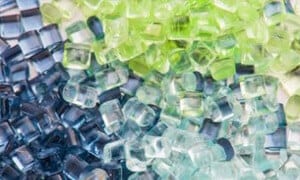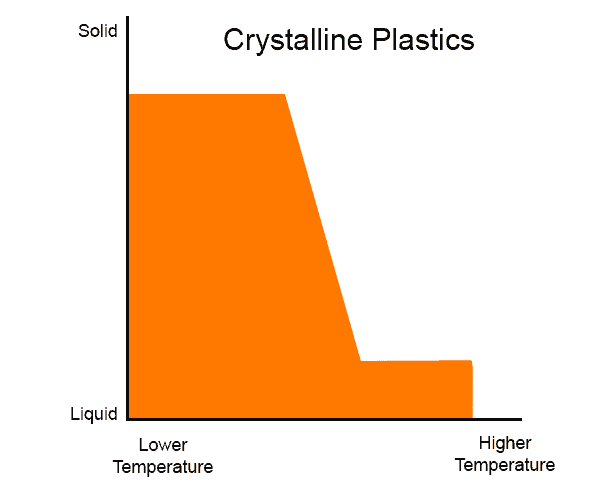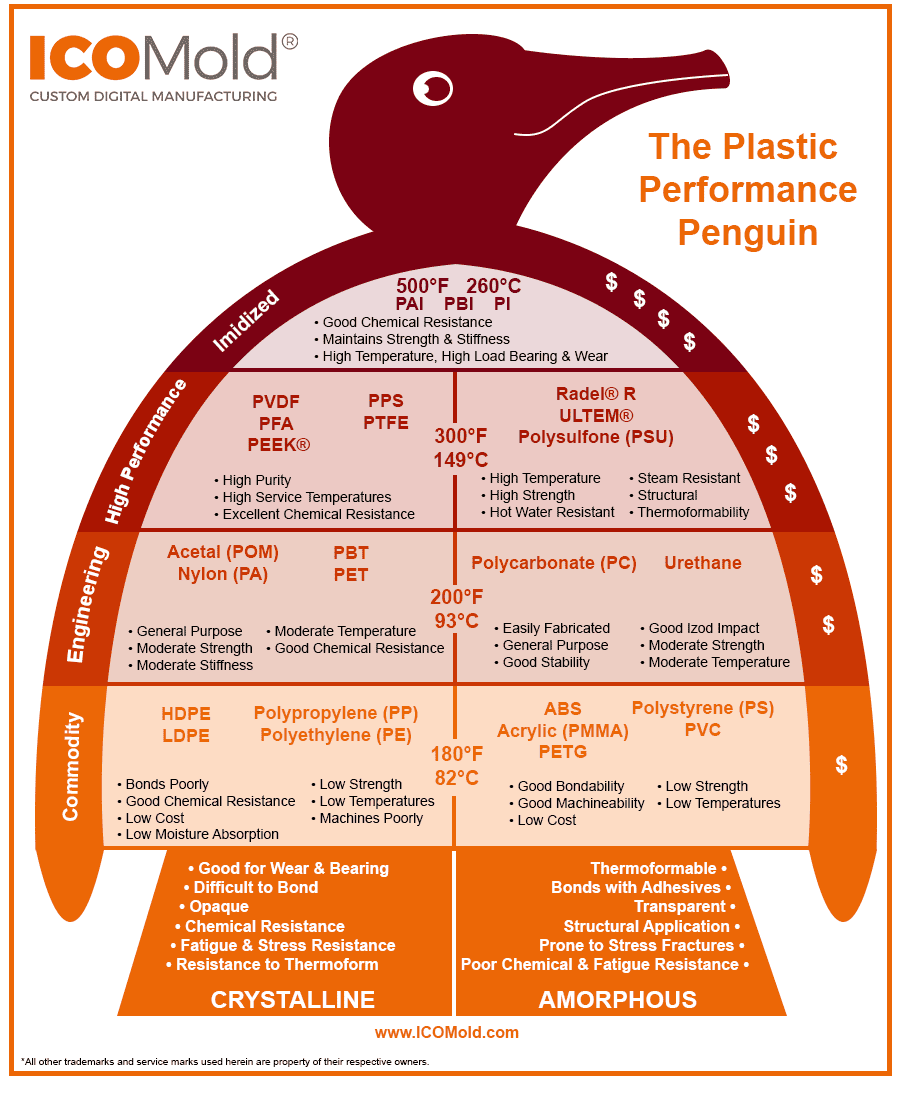Plastic Injection Molding Materials
When it comes to plastic injection molding, these are some common plastic materials used:
- Crystalline Plastics
- Amorphous Plastics
- Imidized Plastics
- Polyethylene (PE)
- Polypropylene (PP)
- Acrylonitrile Butadiene Styrene (ABS)
- Polyoxymethylene (POM)
- Polystyrene (PS)
- Resin
- Nylon
- Polycarbonate
- Thermoplastic Rubber
- Fiber Reinforce Plastic
- Glass Filled Nylon
- Acrylic
However, the list doesn’t end here. There are a variety of materials available. That’s why choosing the right plastic material for your custom injection molding project is an important decision. Plastic materials look and behave differently based on the characteristics of their chemical makeup. Based on the part’s intended application and functionality, important material properties must be considered, such as durability, flexibility, performance, texture, density and color.
It is also essential to look at each material’s shrinkage and mold flow rate. Understanding these criteria can mitigate undesirable defects such as warpage, sink marks and color streaks, which can affect the part’s dimensions, tolerances and surface finish.
The injection molding material’s shrink rate needs to be considered. If the parts have an initial production run out of one plastic material, changing material for future production runs may affect the part’s dimensions, because a different material may have a different shrink rate.
ICOMold’s plastic material list offers a wide variety of materials for injection molding. Additionally, if you need a material that’s not listed, contact our sales engineers and we will work with you to obtain your specific plastic resin material.
If you would like to physically compare plastic materials by hand, we recommend purchasing a plastic sample kit which features 20 common plastic materials for you to compare their characteristics and properties.
Crystalline Plastics
The plastic performance chart is split into two halves. The left side of the chart lists some of the most common crystalline polymers. Crystalline resins are characterized by having a resistance to thermoforming, fatigue, stress and chemicals. They are opaque, difficult to bond, and good for wear and bearing. These plastics, while low-cost, are also low-strength and only suitable for relatively low-temperature applications (up to 180 degrees F). Some commodity crystalline thermoplastic polymers include:
- High-density polyethylene (HDPE)
- Low-density polyethylene (LDPE)
- Polypropylene (PP)
- Polyethylene (PE)
Moving up the crystalline side, engineering grade plastics generally cost more than commodity resins. They are mid-range in strength, stiffness and cost, have good chemical resistance, and a moderate temperature range (up to 200 degrees F). These include:
- Polyoxymethylene (POM, a.k.a. acetal)
- Polyamide (PA, a.k.a. nylon)
- Polybutylene terephthalate (PBT)
- Polyethylene terephthalate (PET)
High performance plastic resins are generally more expensive, are high in purity, and provide better performance in chemical resistance and a temperature range of up to 300 degrees F. They include:
- Perfluoroalkoxy (PFA)
- Polyvinylidene fluoride (PVDF)
- Polyphenylene sulfide (PPS)
- Polytetrafluoroethylene (PTFE)
Amorphous Plastics
On the right side of the chart for comparing plastic resin performance characteristics are some common amorphous plastics. Amorphous resins have completely different characteristics than crystalline plastics. They have poor chemical and fatigue resistance, and are prone to stress fractures. They are transparent, compared to crystalline plastics which are opaque. On the plus side, they can be thermoformed, they bond with adhesives, and are good for structural applications. Besides being inexpensive, they have good bondability and machineability. The negatives are that they have low strength and a low temperature range, only up to 180 degrees F, just as the crystalline commodity plastics. Low-cost, commodity amorphous resins include:
- Acrylonitrile butadiene styrene (ABS)
- Polystyrene (PS)
- Poly(methyl methacrylate) (PMMA, a.k.a. acrylic)
- Polyethylene terephthalate glycol (PETG)
- Polyvinyl chloride (PVC)
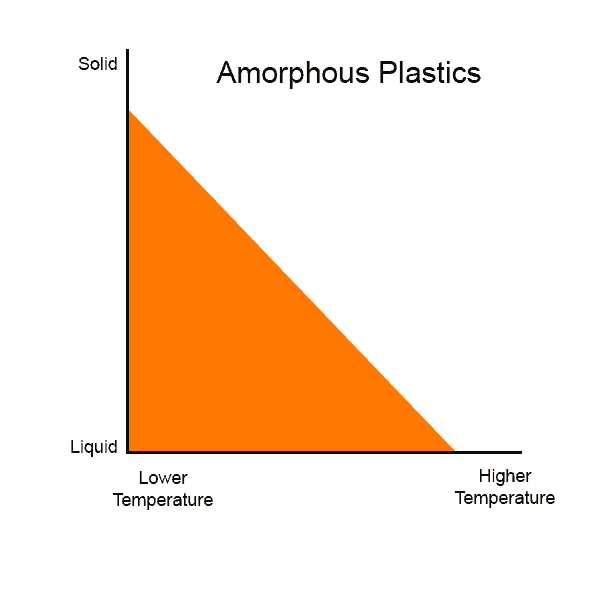
- Polycarbonate (PC)
- Polyurethane (PUR or PU)
The high-cost, high-performance amorphous resins are resistant to hot water and steam, and are rated for high temperature applications, up to 300 degrees F. They have high thermoformability and high strength. Plastics in this category include:
- Polyphenylsulfone (PPSU, a.k.a. Radel R®)
- Polyetherimide (PEI, a.k.a. Ultem®)
- Polysulfone (PSU)
The table below specifies the injection molding material grade, characteristics, sample applications and other details for each material. In addition, many of the materials listed include a downloadable PDF material data sheet. Use the search box in the upper left-hand corner to search the entire database, or narrow your search by checking the boxes that meet your product’s needs.
Imidized Plastics
At the top of the chart are imidized materials. They are high-performance plastics, with a high maximum service temperature (500 degrees F), and a corresponding high cost. They have a high resistance to chemicals, they are strong and stiff, and capable of bearing a high load. Materials in this category include:
- Polyamide-imide (PAI)
- Polybenzimidazole (PBI)
- Polyimide (PI)
Common Plastic Materials to Fit a Wide Range of Applications
Choosing the right plastic material for your parts is very important. The material should be selected based on the intended application of the part. It must be able to withstand the various conditions the part will be in. Some applications may require a very specialized, high-performance and high-cost material. But for many, one of the common, low-cost, commodity plastic materials will perform adequately in a wide range of applications. Here are five of the most common plastic resins:
Polyethylene – PE Injection Molding
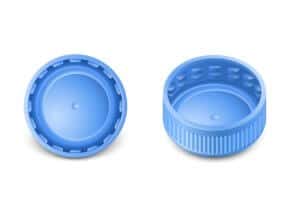
LDPE is the most flexible type of polyethylene, and it is widely used in packaging. It provides superior moisture resistance, although it should not be used in harsh weather or high temperature conditions. It has high impact strength and good chemical resistance. It is a low-cost option that can be easily processed by most methods.
This versatile resin is used for many everyday products such as plastic bags, plastic films, bottles, containers, lids and caps. It is also used to make six-pack rings, toys and computer components. It is often recycled and made into items such as trash cans, floor tile, paneling and furniture.
Polypropylene – PP Injection Molding
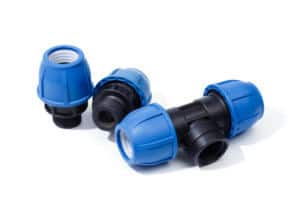
PP is tough, fatigue- and chemical-resistant, but vulnerable to UV radiation and it is flammable. It is a versatile plastic, as it is easily customized with additives. It is naturally white.
Due to the elasticity of PP, it makes a good material for living hinges. It is also used in many common items such as buckets, packaging, bottle caps, toys and many other items.
Acrylonitrile Butadiene Styrene – ABS Injection Molding
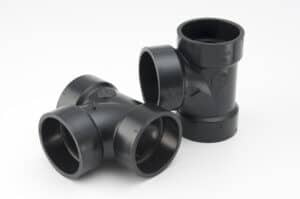
ABS provides superior strength and temperature resistance. It combines the strength and rigidity of acrylonitrile and styrene polymers with the toughness of polybutadiene, a rubbery material, even at low temperature. The styrene gives the plastic a shiny, colorfast, high-quality surface finish. ABS molding is on direction to consider.
Polyoxymethylene – POM (Acetal) Injection Molding
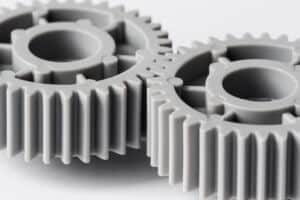
POM provides high strength, rigidity and hardness, and it is resistant to chemical solvent. It is opaque white in its natural state, but it is easy to color to any color.
POM is a good choice for high-performance components like small gears and bearings, and other applications where the component comes in contact with other parts, such as plastic gears and ball bearings. It is commonly used in the automotive and consumer electronics industries, and it is used in eyeglass frames, guns, knife handles and other items that require strength and toughness.
Polystyrene – PS Injection Molding
Polystyrene (PS) is a widely-used polymer that can be either solid or foamed. As a solid, it is used to make things like disposable cutlery, and in its foam state (Styrofoam) it can be extruded to make things like packing peanuts and disposable drinking cups.
PS is clear, hard, and fairly brittle (think of how easily the tines can break off of a plastic fork). It is naturally transparent, but can be colored with colorants. It is not biodegradable, so many PS items, especially “single-use” items, contribute to the world’s litter problem. It is also used to make CD jewel cases, license plate frames and plastic model kits.

